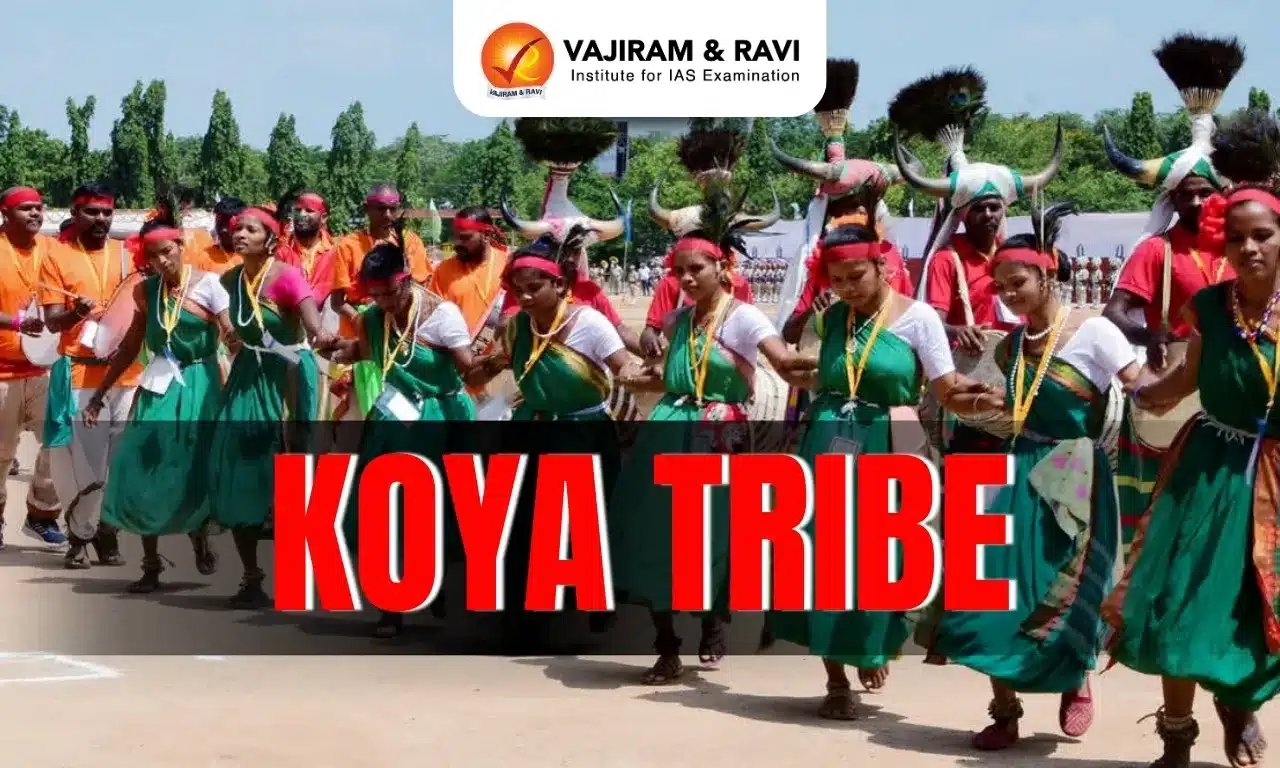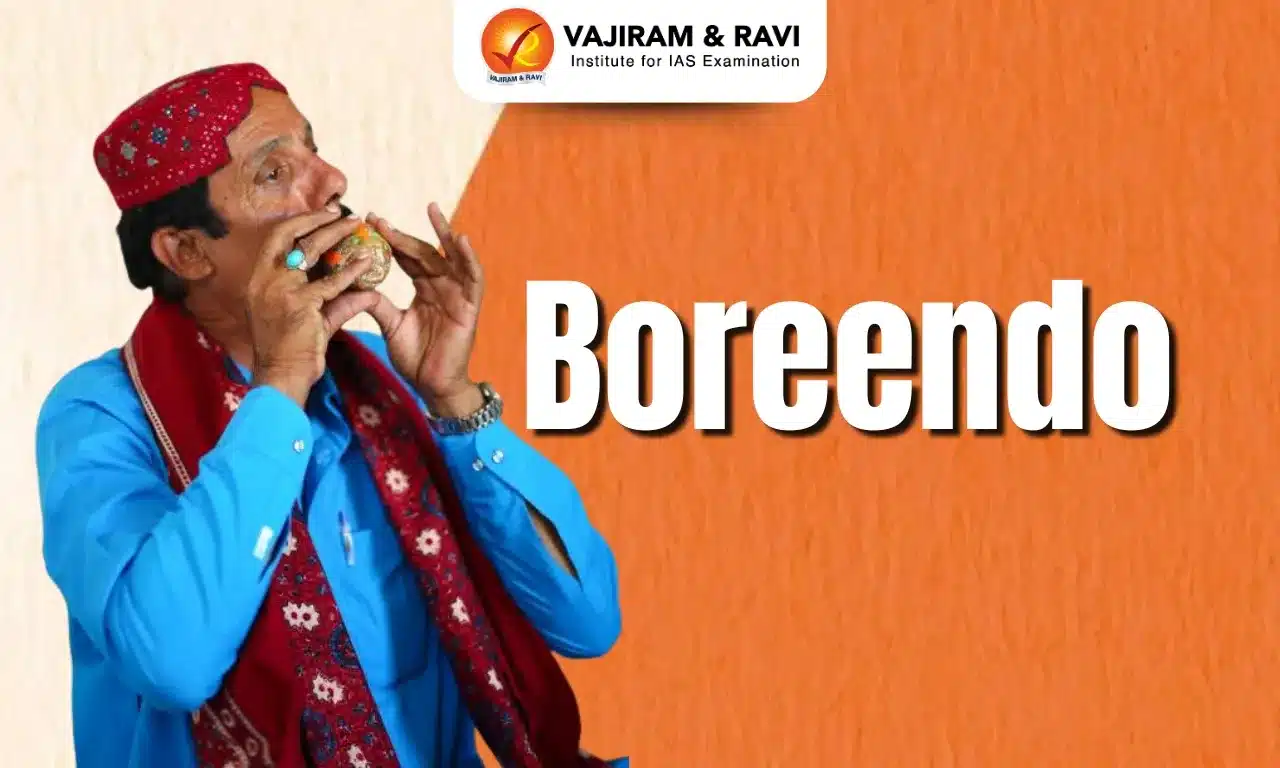Koya Tribe Latest News
The Supreme Court recently issued notice on a plea by Koya tribe members challenging Telangana HC’s order on the ST status of Lambadi, Sugali & Banjara communities, citing the impact on reservation benefits.
About Koya Tribe
- The Koya are one of the few multi-racial and multi-lingual tribal communities in India.
- They live in the forests, plains, and valleys on both sides of the Godavari River, in the states of Andhra Pradesh, Telangana, Chhattisgarh, and Odisha.
- According to the 2011 census, the total population of these tribes in India is 7,38,629.
- The Koyas call themselves as “Koithur“
- They are said to have migrated to central India from their original home in Bastar, northern India.
Koya Tribe Language
- Koyas speaks the Koya language, also known as koya basha, and is a member of the Dravidian language family. It is closely related to Gondi and has been strongly influenced by Telugu.
- Most Koyas speak either Gondi or Telugu, in addition to Koyi.
Koya Tribe Occupation
- Traditionally, they were pastoralists and shifting cultivators, but nowadays, they have taken to settled cultivation supplemented by animal husbandry and seasonal forest collections.
- They grow Jowar, Ragi, Bajra, and other millets.
Koya Tribe Society and Culture
- All Koya belong to one of five sub-divisions called gotrams. Every Koya is born into a clan, and he cannot leave it.
- The Koyas have a patrilineal and patrilocal family. The family is called “Kutum”. The nuclear family is the predominant type.
- Monogamy is prevalent among the Koyas.
- The Koya usually live in villages located near dependable water sources.
- Villages vary in size from three to more than sixty houses.
- The chief of every Koya village is called “Peda’.
- The Koya practice their own ethnic religion, but also worship a number of Hindu gods and goddesses.
- Many Koya deities are female, the most important being the “mother earth.”
- They maintain community funds and grain banks at the village level to help the needy families and provide food security.
- Koyas either bury or cremate the dead. They erect menhirs in memory of the dead.
- Their main festivals are Vijji Pandum (seeds charming festival) and KondalaKolupu (festival to appease Hill deities).
- Koyas perform a robust, colourful dance called Permakok (Bison horn dance) during festivals and marriage ceremonies.
Source: LB
Last updated on December, 2025
→ Check out the latest UPSC Syllabus 2026 here.
→ Join Vajiram & Ravi’s Interview Guidance Programme for expert help to crack your final UPSC stage.
→ UPSC Mains Result 2025 is now out.
→ UPSC Notification 2026 is scheduled to be released on January 14, 2026.
→ UPSC Calendar 2026 is released on 15th May, 2025.
→ The UPSC Vacancy 2025 were released 1129, out of which 979 were for UPSC CSE and remaining 150 are for UPSC IFoS.
→ UPSC Prelims 2026 will be conducted on 24th May, 2026 & UPSC Mains 2026 will be conducted on 21st August 2026.
→ The UPSC Selection Process is of 3 stages-Prelims, Mains and Interview.
→ UPSC Result 2024 is released with latest UPSC Marksheet 2024. Check Now!
→ UPSC Prelims Result 2025 is out now for the CSE held on 25 May 2025.
→ UPSC Toppers List 2024 is released now. Shakti Dubey is UPSC AIR 1 2024 Topper.
→ UPSC Prelims Question Paper 2025 and Unofficial Prelims Answer Key 2025 are available now.
→ UPSC Mains Question Paper 2025 is out for Essay, GS 1, 2, 3 & GS 4.
→ UPSC Mains Indian Language Question Paper 2025 is now out.
→ UPSC Mains Optional Question Paper 2025 is now out.
→ Also check Best IAS Coaching in Delhi
Koya Tribe FAQs
Q1. The Koya tribe primarily inhabits the regions along which river?+
Q2. What do the Koya people call themselves?+
Q3. According to the 2011 Census, what is the population of the Koya tribe in India?+
Q4. What type of dance is performed by the Koya tribe during festivals and marriage ceremonies?+
Tags: koya tribe

















